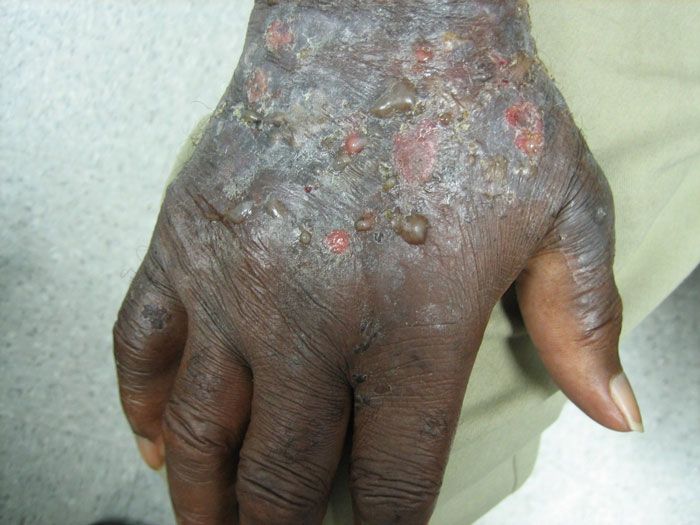Bullous Pemphigoid in an Older Adult
The tense bullae shown here and the chronicity of the disease should suggest the diagnosis of bullous pemphigoid.

A 69-year-old man noted the gradual onset of multiple small blisters on the hands. These lesions did not itch, but did hurt when the blisters eventually ruptured. The patient also had scattered similar lesions on both thighs and a few on the upper, anterior chest.
Key point: Autoimmune blistering diseases are common in the older adult. The tense bullae depicted here and the chronicity of the disease based on history should suggest the diagnosis of bullous pemphigoid. Unlike pemphigus, this disease runs a more indolent course.
Treatment: Regional application of potent topical corticosteroids should be tried initially. If this maneuver does not clear existing lesions and prevent new ones in affected areas, low-dose oral prednisone is in order.
Note: Pemphigoid almost always “burns out” in 3 to 5 years, so a conservative approach is justifiable.